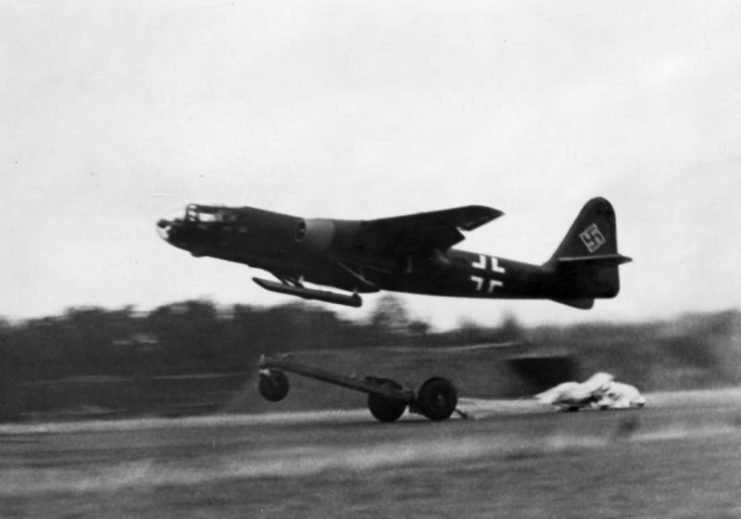Undercarriage Configurations
The initial market research indicates that the most common undercarriage types are tricycle, taildragger and skid (or fuselage) configurations, of the 24 aircraft viewed there were six skid, eight tricycle and ten taildraggers. The skid landing system were used on aircraft that were hand launched and the tricycle and taildragger setups were primarily based on the type of payload to be carried and method of carriage. Aircraft with wing mounted payloads tended to have a tricycle undercarriage whereas a taildragger aircraft were more common for payloads stored within the fuselage.
Tricycle#
The use of a tricycle landing gear configuration is advantageous as the take-off attitude is similar to that of the flare during landing which makes the aircraft easier to land and reduces the risk of damage. This setup also provides a stable platform during ground manoeuvres and during the take-off run even with a crosswind component. The main draw back is the limited options for placement of the undercarriage as the main gear needs to be located aft, but still close to, the CG position of the aircraft. This may become troublesome later on during the design process when the CGposition changes due to additional payload.
Taildragger#
An advantage of using a taildragger setup is the potential for a lower undercarriage weight; the tail section need not necessarily be supported by a wheel but a skid or even by just reinforcing the underside of the tail plane. A drawback is that during take-off, the tail plane will rise before the main wing has enough lift to take-off, if the main gear size and position is not correct then the wheels will dig in to the ground and cause the plane to flip.

Trolley and Skid#
The benefits of using a trolley and skid system is the omission of the take-off/ landing gear from the aircraft’s OWE thus improving the MTOW/OWE ratio during the competition. The trolley is left on the ground as the aircraft gains lift, as shown in figure 1, and rises out of the cradle; the skid is then used for landing on a grass strip. The draw backs of this setup are the possible infringement on the BMFA rules, however, this will need to be confirmed. Another risk, should the design be used, is the requirement to strengthen the skid and area where the skid is mounted to the fuselage as, unlike conventional wheeled gear, the skid does not have a dampener (pneumatic piston, tyre and inner tube) to cushion the landing.